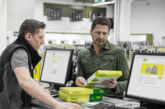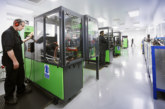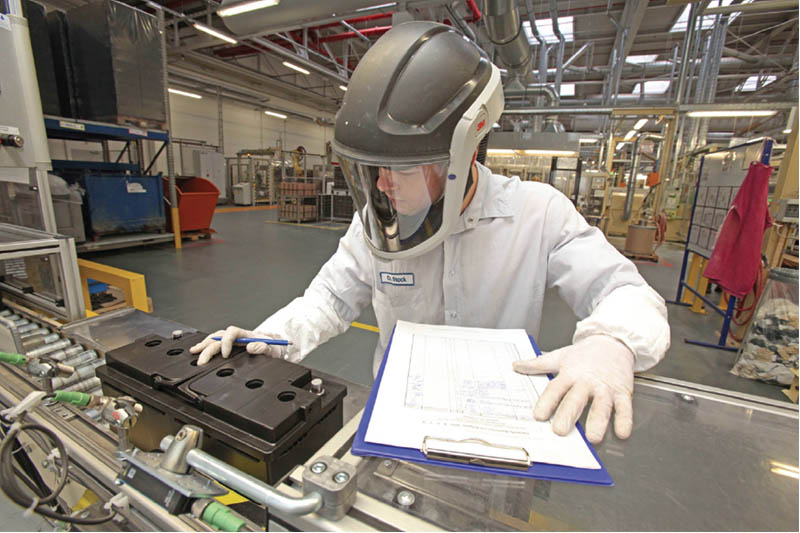
Clarios, the parent company of Varta Batteries, offers an insight into the history of the battery brand.
Varta has a long history of designing and manufacturing automotive batteries – over 130 years, in fact! That’s 130 years of developing the latest battery technology to power all kinds of vehicles. Let’s take a look back at some key milestones in battery technology, and into the company’s long history.
In 1887, Adolph Müller founded the first battery company in Germany. At that time, he had recognised the great market potential for rechargeable accumulators and thus laid the foundation for the future Varta. In 1893, these batteries powered the first electric cars in Germany. As more and more drivers wanted to venture out on the road at night, the company was making the very first batteries for exterior car lighting.
From 1914 onwards, Varta lead-acid batteries became increasingly popular as a means of starting car engines quickly and reliably. As the brand subsequently expanded worldwide, the product range also expanded to include the dry cell battery. Even at this early stage, Varta’s battery range was one of the most comprehensive on the market. The number of cars worldwide climbed past the 3 million mark, and the need for reliable and powerful batteries was increasing just as rapidly.
Building blocks
1935 saw the forerunner of today’s forklift truck, initially called an ‘electric car with lifting bars’, come onto the market. From day one, they were factory-equipped with Varta batteries. In addition, the company offered the first batteries in standard case sizes, which fit in every car and made replacement quick, easy, and inexpensive. The first assembly line for automotive batteries went into operation, making the production of batteries faster and cheaper. The savings were benefitting customers in the form of lower-cost batteries.
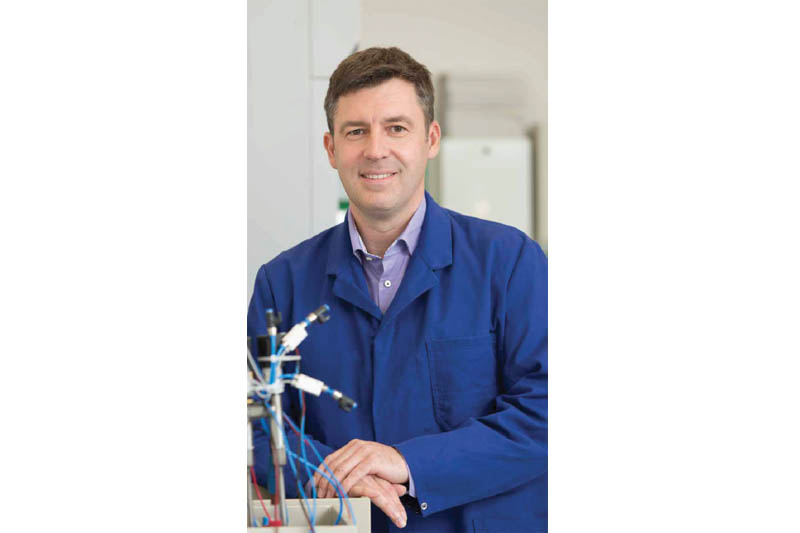
In 1955, in the early stage of mass production, the company developed a paper-lined battery with a double-laminated separator between the plates. The success of the product is reflected in the fact that 23 countries adopted the patent for it.
The change from 6-volt to 12-volt batteries in automobiles was made to meet the growing energy needs in vehicle models of the 1960s. In 1965, Varta started production of dry starter batteries in Germany.
Many innovations in battery technology took place post-1970. The first leak-proof car battery was introduced – the Varta Super Dry, underpinning the company’s reputation as a manufacturer of reliable products. Around this time, the first ever maintenance-free starter batteries – based on selenium technology – were launched, boasting a low self-discharge, low water consumption, and generally reduced costs. By 1986, nearly all batteries were maintenance free.
New processes to the grid and separators enabled the maintenance-free Varta Grand Prix batteries with improved cold-start performance. Varta silver technology for automotive batteries was launched in Europe in 1995, and was quickly adopted by VMs. The company’s silver battery became an ideal partner for high-performance vehicles with extensive equipment.
In 2003, the new automotive battery technology centre opened in Hannover, Germany, bringing together some of the industry’s most skilled designers and engineers. In the same year, VMs awarded Varta as the very first supplier of AGM (Absorbent Glass Mat technology) batteries for luxury cars. The premium flooded battery series, the Varta Dynamic Trio, was launched in 2006. The Silver, Blue and Black model variants ensured that the demands of a car at any age could be accommodated.
Shortly after that, the company became a supplier of batteries for vehicles with start-stop systems and for hybrid and electric cars thanks to its new technology; AGM and EFB (Enhanced Flooded Batteries). Launched in 2008, the PowerFrame technology was one of Varta’s greatest achievements. It ensures optimum energy flow, performance, and reliability, whatever the battery application. Today, every Varta battery still has the PowerFrame grid inside.
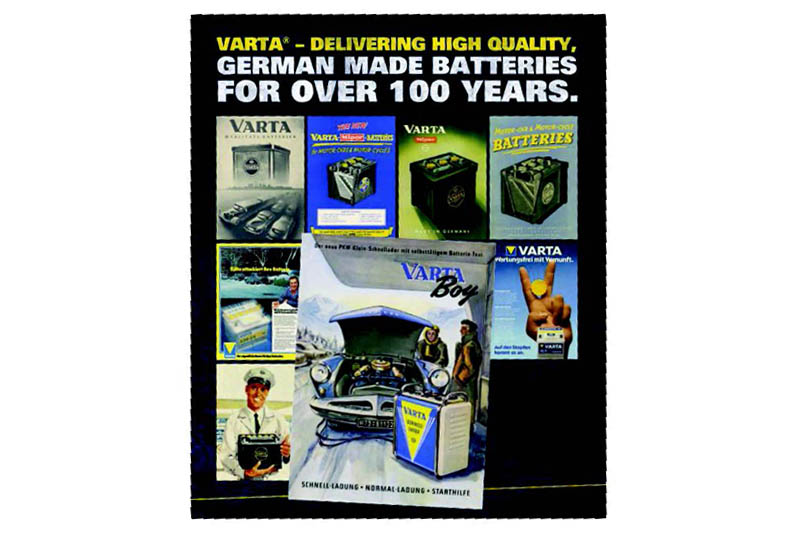
VMs continue to rely on the company’s battery solutions for start-stop. By the beginning of 2009, 80% of new vehicles with start-stop technology were factory-equipped with a Varta battery. To meet the increased demand generated by its start-stop battery range, the company continued to expand its production capacity in Europe.
A major milestone in commercial vehicle battery technology took place in 2014: Varta introduced the very first EFB for commercial vehicles, with features such as mixing elements to ensure electrolyte didn’t stratify, and enhanced fixations to help with vibration resistance. With three times the cycle life of a traditional flooded battery, the EFB for commercial vehicles was a game changer; it could power electrical consumers on-board a truck during overnight stays, and also deal with short start-then-stop-again type journeys that a bus might experience in city traffic.
Today, Varta products will be found in millions of cars, commercial vehicles, motorcycles and leisure applications. The company’s engineers put their experience, know-how and precision into every single battery. All 16,000 Varta employees around the world strive to produce and deliver the highest quality batteries available to VMs and drivers, and ensure they keep on moving, for longer.
Clarios’ key stats
- Clarios sold 143 million batteries in 2020
- One in three cars around the world are powered by the company’s batteries
- There are 16,000 team members…
- As well as 55 manufacturing, recycling and distribution centres worldwide…
- And six dedicated Research & Development facilities



